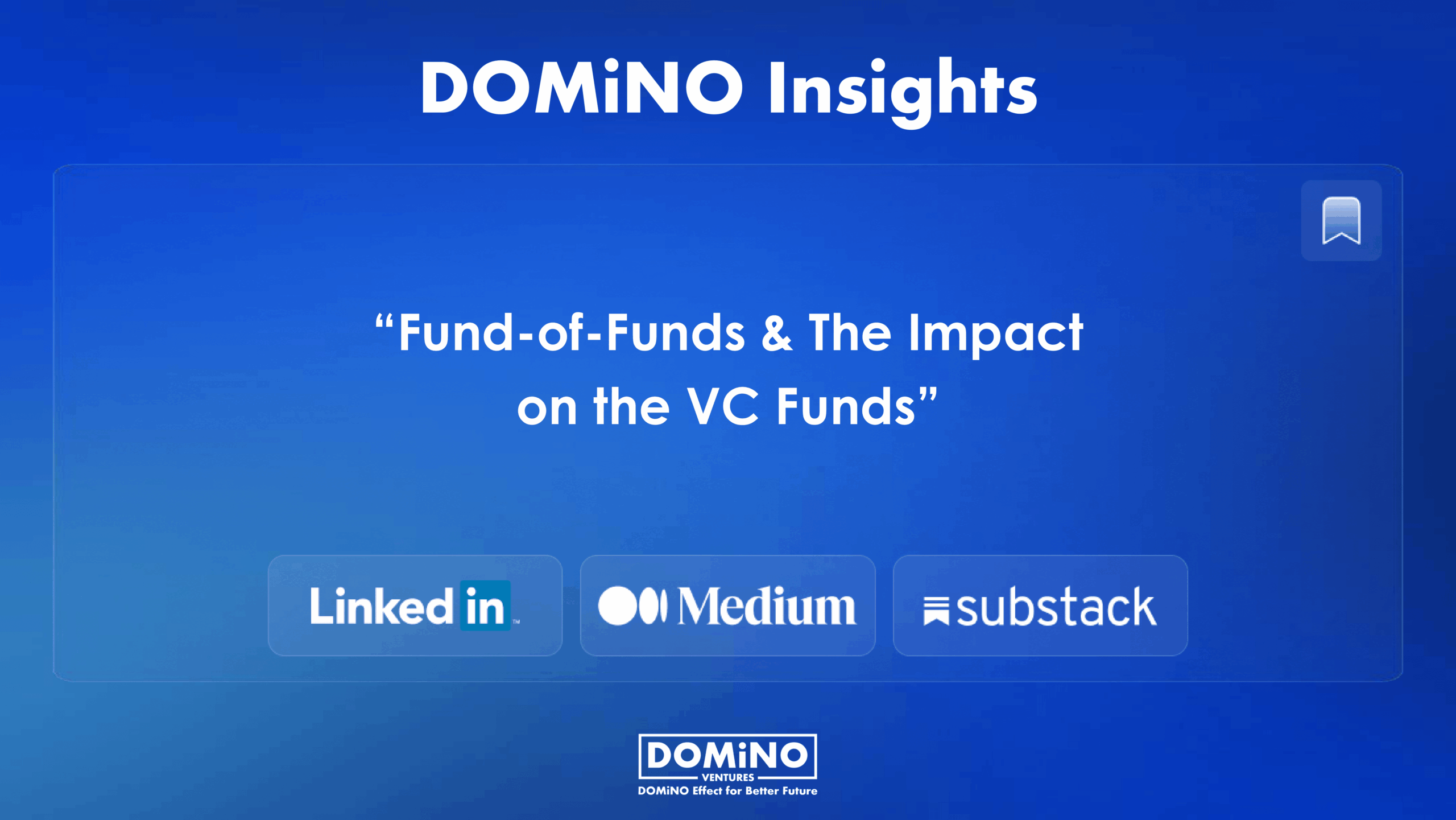Fund-of-Funds & The Impact on the VC Funds


Fund-of-Funds & The Impact on the VC Funds
Fund-of-Funds (FoFs) are a type of investment vehicle that pools capital from multiple institutional investors and invests in a diversified portfolio of venture capital (VC) funds. FoFs are attractive to institutional investors because they offer several benefits, including diversification, access to top-tier VC funds, time and resource efficiency, and risk mitigation.
In recent years, Fund-of-Funds has garnered increasing interest among institutional LPs seeking to navigate the intricate maze of the VC world. These savvy investors, well-versed in the high-risk, high-reward nature of venture capital, have found solace in the unique value proposition that FoFs bring to the table. Diversification, a fundamental tenet of sound investment strategies, is at the core of the allure. FoFs allow LPs to mitigate the inherent risks associated with individual VC investments by spreading their capital across an array of carefully selected VC funds and startup companies. Consequently, LPs can safeguard their investment portfolios against the adverse impact of any single investment’s underperformance while maintaining the potential for significant returns from successful startups.
Exploring the Attraction of Fund-of-Funds
Fund-of-Funds are attractive because they offer a mix of benefits. They provide diversification, which helps reduce risk, and give investors access to the best VC funds. Institutional investors, who know that VC investments can be risky but offer high rewards, find comfort in FoFs because they help lower the risk of individual investments while still offering the chance for big returns. Also, being part of a Fund-of-Funds gives investors the chance to be part of exciting and innovative startups that are leading the way in their industries.
Enhanced Efficiency and Convenience in VC Investing
Fund-of-Funds offer institutional investors an easy and efficient way to invest in venture capital. Experienced managers take care of researching, making investment choices, and monitoring the investments. This allows investors to focus on what they do best while still benefiting from a diverse range of venture opportunities. The smooth delegation of tasks makes decision-making faster and allocation of resources better, providing investors with a great investment experience.
Strategic Portfolio Construction
Fund-of-Funds are known for their careful way of building investment portfolios. They spread their money across different stages of venture capital, reducing the risk of early investments while taking advantage of the growth potential of later-stage startups. This smart approach helps protect investors’ portfolios from market changes and keeps a good balance between risk and potential rewards.
Analyzing the Impact of Fund-of-Funds on VC Funds
Amplifying Capital Influx
Fund-of-Funds play a strong role in increasing the money that flows into VC funds. They gather investments from many big investors into one place, which gives VC funds a lot more money to work with. This extra money helps VC fund managers make better decisions on when and where to invest and support a wider range of startups with great potential.
Fostering Portfolio Liquidity
Fund-of-Funds provide valuable cash flow to VC funds through their structured investment cycles. When FoFs distribute money to their investors, VC fund managers can use that cash to invest more in successful portfolio companies. This extra money helps these companies grow even more, going from new startups to successful market leaders.
Elevating Fundraising Success
Venture capital funds supported by trustworthy Fund-of-Funds enjoy higher credibility with potential investors. When established investors back these funds, it boosts their reputation and makes potential investors feel more confident and trusting. This credibility helps them raise money faster and keeps the flow of funds into the venture capital world steady.
Fund-of-Funds play a dual role – they offer professional guidance to big investors for VC investments and also fuel the growth of new startups, which helps the entire venture capital industry move forward.
Clarity. Ambition. Precision. Respect. Impact.
At DOMiNO, our mission is to back bold founders and create the DOMiNO Effect for Better Future. These five values guide everything we do from how we choose our partners to how we show up for them. They reflect who we are, what we stand for, and how we build together.
Bold Moves Shift The Future
We back high-tech, pure-digital, and first-day global startups led by founders obsessed with finding innovative ways to build a Better Future with the DOMiNO Effect. We support outstanding technology founders from Eastern Europe, Central Asia and the Caucasus to help them realize their global ambitions.
Beyond Sectors. Into Scale
We’re looking for high-tech, pure-digital and first-day global startups and the big brains behind them. It’s not just about the category, it’s about clarity of vision and the courage to scale it fast.
Working on something big? We're all ears.
The best way to reach us is via someone we mutually know. You can always email us directly at apply@dominovc.com
Looking to invest in bold ideas for a Better Future?
The best way to invest with us is through shared vision and bold ambition, if you're ready now, our funds and portfolio are open to those ready to shape the future. Let's invest in it together.














